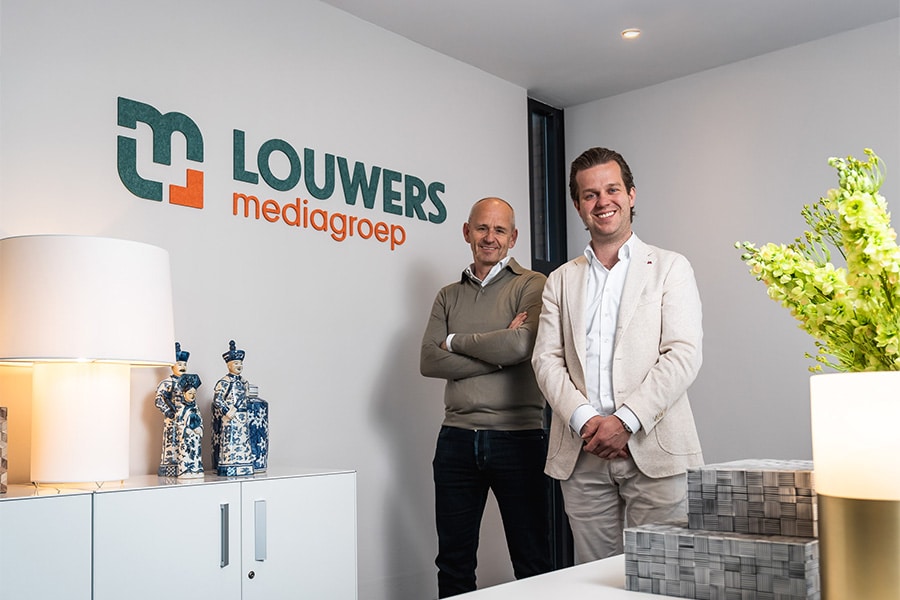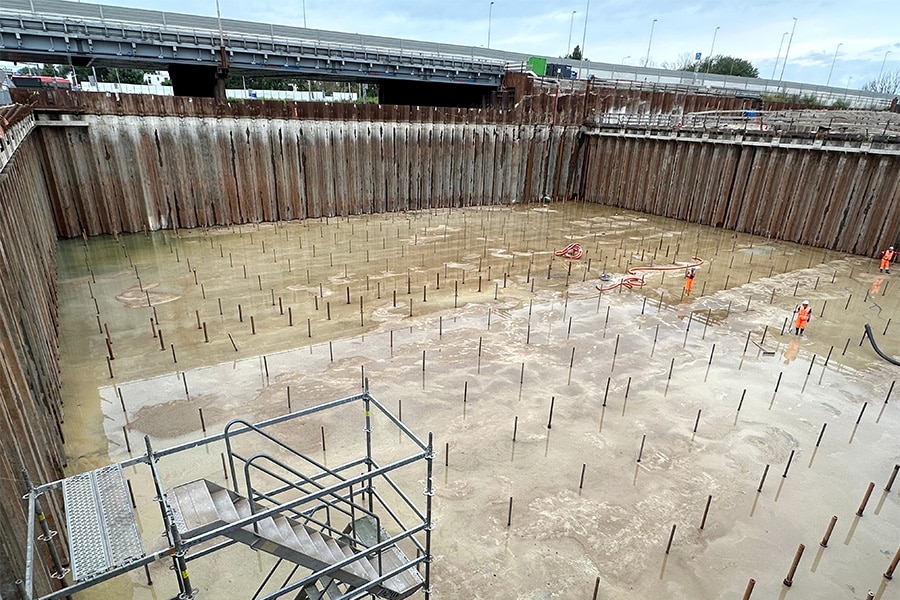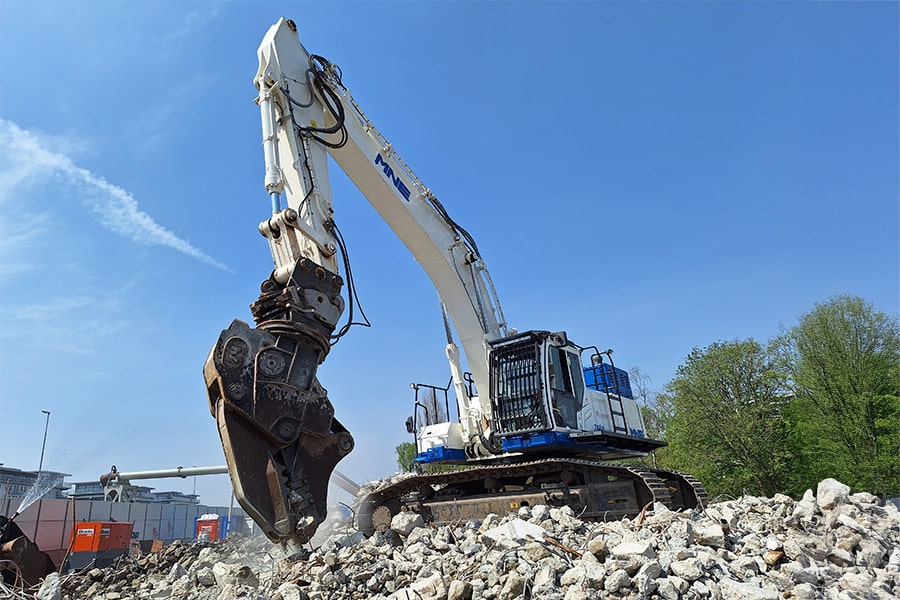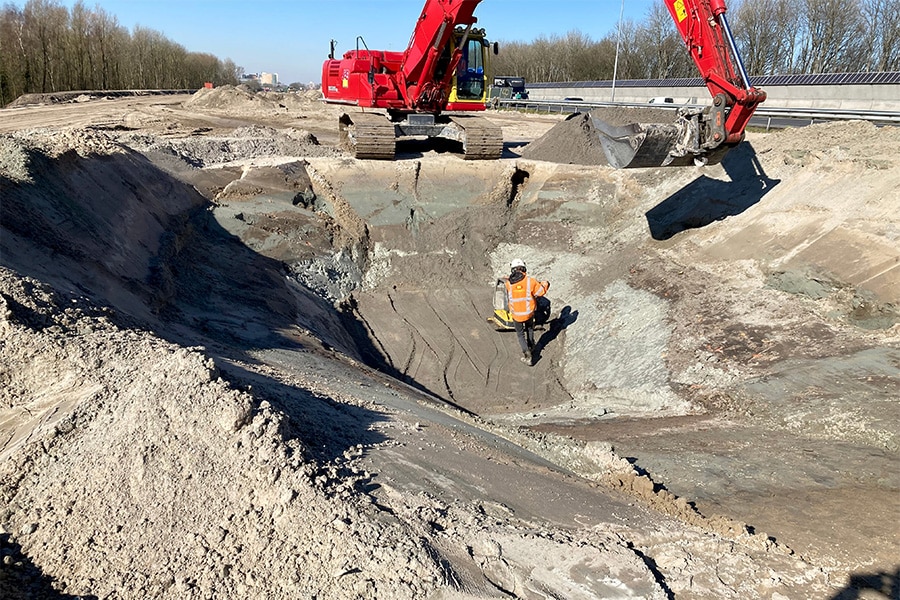
Maximum bearing capacity in the case of weak subsoil
'Nomen est omen,' goes the Latin proverb. In other words: the name is an omen. That is certainly true in the case of the joining of forces of two expertise companies. Sterk BV and Mammoet Heavy Duty Pavements (HDP) joined forces for a solution to deal with the adverse effects of soft ground. This led to an innovative idea that has now had its baptism of fire and passed the test with flying colors.
We speak with Peter van Halteren, director at Sterk BV, Ronald Kleinjan, director at Mammoet HDP and Roel Brouwer, principal consultant and co-owner of Geobest. A powerful story about a solution made possible by bringing together expertise across disciplines.

A universal problem solved
In the world of civil engineering, the phenomenon of "weak subsoil" is a well-known fact. Depending on how bad the subsoil is, different solutions can be used to make it passable and loadable. Think of reinforcement mats, driving plates and so on. It only becomes really problematic when the subsoil is very poor in terms of bearing capacity and the load on site is high. Such a scenario is, for example, the construction of crane stands on a soft soil. Both Sterk BV and Mammoet HDP have their own solutions to create more bearing capacity when there is a weak subsoil. A former Mammoet employee brought the two parties into contact with each other. Mammoet HDP's program includes the Enviro-Mat, an application in which a load-bearing layer can be created using soil from the area, cement and an additive. Compared to the alternatives, it saves time, material and money and lowers the ecological footprint of a project. The Enviro-Mat can be used for both temporary and permanent surfacing of roads, storage areas and crane tracks. The Enviro-Mat is being used successfully by Mammoet worldwide. Roel Brouwer: "The Enviro-Mat can be used in the Netherlands in many cases without pre-loading, unless the soil is too compressible." Strong has its own in-house technique, the E-wall. A special cutter is used to make a trench in the subsoil. The soil is completely removed and the resulting trench is immediately filled with a material of your choice. This creates walls in the ground. Peter van Halteren: "By combining the Enviro-Mat and E-wall, maximum bearing capacity is generated." The two separate techniques complement each other optimally. "We control the walls in the ground thanks to controlled material, such as concrete, bentonite, sand, gravel or even on-site mixed area soil." Roel adds: "The test showed that when you apply E-walls down to the sand layers, you minimize settlement. With the addition of Enviro-Mat to the E-wall, you achieve a subgrade where you can create a crane siding without any problem."

From theory to practice
The baptism of fire for the innovative solution took place in Zeewolde, where crane emplacements for the construction of wind turbines had to be realized and there is very soft ground. "In theory, we knew it had to work," says Peter van Halteren. "The models were simulated in software. The results were promising. In practice we did a test and loaded it extremely heavily, of course carefully monitoring everything." Roel adds, "The good numerical results from the simulation were compared with the data from the practical test. In Plaxis, we were then able to explain and simulate the entire test."

Two obvious optimizations
Ronald continues: "We have two optimizations with our system. We can do with less cement and work with a lighter mixture (mortar). By bringing back area soil (from the trench) with other materials, such as cement with Geosta as an additive, we are working sustainably with very good properties." Roel adds, "With Geosta you make the mix both hard and flexible. That gives the flexibility and toughness to be able to deform, rather than break." Ronald: "We are currently calculating what the limits are that we need to put on this. For Mammoet, this is very interesting to use."

Huge field of application
For all loads exceeding 10 tons per m2 would normally require a very heavy foundation in this foundation. Time-consuming, costly and less durable. "Through our combined techniques, substrates can be made loadable in various places. Think, for example, of container terminals, runways and in places where temporary buildings are erected. That's where our reach lies."
Peter explains, "The E-wall was once conceived as an optimization of the soil mix wall but has many more applications. Just imagine its application as an anti-piping or stability solution in dike works, or for the walls of small pumping stations or cellars. Combined with the Enviro-Mat, there are many more possibilities such as road stabilization, laydown areas and more. A great collaboration to solve foundation issues anywhere." In conclusion, Roel emphasizes that the solution means absolutely custom foundation work. "We can vary with the distances between the E-walls, we can determine the depth, the direction. As a foundation, we have a calibrated model in our hands. It's post-engineering based on post-analysis."



